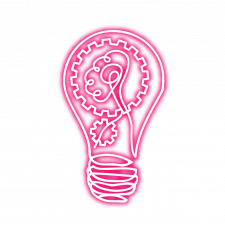What Is an IEP?
IEP stands for Individualized Education Plan or Program.
As the name suggests, it’s a plan or program designed to provide customized teaching and related services to children with disabilities from ages two to twenty-two, or who are enrolled in an elementary or secondary educational institution.
The Individualized Education Program (IEP) is designed by a team of educators, the child in need, family members, and authorized advocates.
Depending on a student’s needs and abilities, the team determines the student’s IEP’s objectives, goals, and services needed to reach the goals.
IEP’s concentrate on a child’s strengths, areas of need, include measurable goals, including non-academic objectives, and define the program and services necessary for a child’s educational environment to guarantee development in the student’s individual and unique priority needs for a successful educational career.
The written plan is known as an Individualized Education Program (IEP).
When parents, students, and school staff meet to discuss and form a student’s educational program, the IEP serves as a complete document of the decisions made at the meeting. It is the educators ‘road map.”
Parents and school staff must agree to the IEP before services may be delivered. Parents have the right to take the IEP home before signing an IEP.
Parents are to be given a copy of the IEP and should include meeting minutes, and attendance signature page.
Parents may sign the IEP in attendance only until they accept the plan in part or in its entirety.
Parents may request weekly, monthly or quarterly updates on their child’s progress, letting them know whether the year’s goals will be fulfilled.
Parents may also request an IEP meeting at any time and the district is to provide parents a meeting within 30 days.
At least once a year, the IEP team gathers to evaluate the progress, lack of anticipated progress, and current needs.
In the reviews, school officials and parents (and students if appropriate) analyze performance and discuss if adjustments should be implemented.
If the parent disagrees with the plan, do not sign until you are in agreement. If they are unable to reach an agreement, the parents may request mediation or a due process hearing.
There can be no doubt about the necessity of an Individualized Education Program (IEP).
With implemented IEPs, there is a greater chance to constructively impact the lives of children with learning impediments.
Each plan is uniquely designed based on each child’s individual needs. IEPs are a foundation of special education.
A civil rights legislation, Section 504 protects the rights of persons with disabilities in programs and events that get federal funding from the Department of Education (DOE).
If a student now has or has had a significant disability that substantially restricts a key life activity, he or she is qualified to apply.
Attention deficit hyperactivity disorder (ADHD) students may qualify if their ADHD “significantly impairs” their learning abilities.
This is called an OHI (Other Health Impairment). There are health impairments under section 504.
In a 504 Plan, adjustments are made for a child who has been recognized as having a disability under the law and who is enrolled in public education through the college level.
Who Qualifies for an IEP and 504? How Does One Get Qualified?
To qualify for an IEP, a student must fulfill the following requirements in order to be eligible for an Individualized Education Program (IEP).
The law requires the following:
- 3 to 21 years of age.
- A child must have a learning deficit that is severe enough to require specialized education in order to narrow the achievement gap between him/her and his/her classmates.
A diverse team of specialists conduct standardized assessments, examine everyday work
(exams and quizzes etc) and speak with educators involved in the student’s education to determine whether or not the student is qualified for special services.
State and local agencies get federal money under IDEA (the Individuals with Disabilities Education Act) in order to offer special education and associated services to students who are eligible.
A 504 Plan is for children who seem to have a disability, have a history of an impairment, or are recognized as having a disability, but just don’t qualify for special education services under the IDEA.
To qualify for a 504 a student must:
- Have a physical or mental impairment that substantially limits one or more of such a person’s major life activities.
- Have a record of such an impairment.
- Is regarded as having such an impairment
For example, a student with ADHD and with no deficit in their cognitive abilities would qualify for a 504 Plan which would allow the student accommodations to help compensate for their weaknesses.
Essentially this plan levels the playing field for these students.
A 504 plan evaluation is not usually as thorough as an IEP evaluation.
It must be emphasized that Section 504 falls under the management responsibility of the general education program, unlike an IEP.
School staff and parents work in collaboration to help guarantee the student is provided with the necessary accommodations.
Difference between IEP and 504 Plan?
504 plans are different from individualized education programs (IEP).
Basically, a 504 plan enhances a student’s usual classroom instruction curriculum, and teachers in the classroom are responsible for monitoring a 504 plan.
Services
- All children who require special education assistance must have an Individualized Education Program (IEP). If a student is capable of learning in a general education setting with certain adjustments, they may be eligible for a 504 plan.
- Adequate accommodations are required under Section 504 of the Rehabilitation Act to remove barriers that would prohibit a student from taking full advantage of the program and services provided in the general curriculum. It is possible to document these adjustments in a 504 plan. Equal educational access is the goal of both IEPs and 504 plans for students with special needs.
- The Individualized Education Program (IEP) lays out learning objectives and outlines the services that the school will provide. However, there is no standardized 504 plan. A 504 plan does not have to be a legal document, unlike an IEP
Purpose of IEP
- The main purpose of IEP is to assist students to meet individual goals beyond where the student is performing at the time of the meeting. As a result, recognizing what a student can and cannot accomplish is crucial to the process of designing an individual education plan. Each Individualized Education Program (IEP) is tailored to the student for whom it is intended. It is important parents participate in the IEP planning stage and sign it on behalf of their child.
- In the IEP meeting, parents and instructors have the chance to communicate about the student’s needs, determine which services will be offered to fulfill those needs, and discuss possible outcomes.
- The IEP process offers parents and schools a chance to resolve any disputes they may have about a student’s special education requirements.
- It is crucial parents are aware of their rights, what services the student needs, and to stand their ground to get what is needed for the student.
Academic accomplishment and functional performance are the focus of IEP objectives, not general assertions about what a child will accomplish in a year.
How the school plans to fulfill the child’s requirements must be included in the IEP, along with a method for assessing progress and reporting back to parents.
Based on the child’s current academic ability attainment and related developmental requirements, the IEP should be approved under IDEA 2004 if it contains research-validated teaching approaches.
If the IEP does not contain measurable educational and practical goals, it is deficient and subject to criticism.
Purpose of 504 Plan
504 plans are official documents schools establish to provide the student with appropriate accommodations.
Any ailment that severely restricts everyday activities is included in that category. These plans are designed to prevent prejudice from occurring.
Children with impairments are also protected at school. Section 504 of the Rehabilitation Act protects them.
It’s civil rights legislation, after all.
Again, it is crucial parents are aware of their rights, what services the student needs, and to stand their ground to get what is needed for the student.
The 504 Plan’s objective is to guarantee that a child with a disability who is enrolled in public schools obtains modifications that will assure their academic achievement and access to the educational environment.
When And Why Is Hiring an IEP and 504 Advocate A Good Idea?
Every effort is made by parents of special needs children to ensure their children are joyful and in a positive environment.
Most parents believe they can manage the task of addressing their children’s development with his or her instructors and the school’s administration on their own, however often an expert is required.
A family’s journey to fulfill a student’s needs involves intricate regulations, unfamiliar terminology, and a slew of paperwork.
Parents who attempt to navigate this process most often profit from the assistance of a special education IEP and 504 advocate, an expert who can enlighten and guide parents seeking support for their children.
- At some time, parents may require additional assistance for the child to receive special education services or participate in other school-sponsored programs. Having an IEP and 504 advocate who has extra expertise and information about certain illnesses or procedures that may be discussed in IEP sessions might be beneficial to them, parents may obtain the support their child needs faster, without having to attend a lot of meetings.
- The feeling of being overwhelmed will diminish if the child is represented by an experienced advocate in these early sessions. Advocacy services may inform parents when acronyms are used, what they represent, and how they pertain to their child’s unique case, if applicable. An advocate assists students in getting qualified for an IEP by obtaining evaluations that may not have been discussed in the meeting.
- Developing a desirable and appropriate IEP may be more attainable with an advocate. It is possible to make modifications to their program if they believe they are not being given the proper opportunities for growth. In this case, advocates work with the school to have the right program in place for the child to flourish, IEP support is accessible in a variety of ways.
- As role models, advocates establish a high standard for the whole IEP team to follow. They are the parent’s role models for behavior. To effectively advocate for a kid, good advocates pose questions and provide helpful ideas.
- When a child has special needs, dealing with IEPs may be a difficult experience. As a result of their restricted availability in the district, certain technologies may be available to a child that is not covered in class. When the child is accompanied by an IEP and 504 advocate, there are many opportunities for him or her to access assistance that would otherwise be unavailable due to paperwork and/or other hurdles.
- Sometimes, the child’s school may declare it is impossible to offer certain services. When it comes to understanding the rights and providing access to what the child’s parents are asking for, an advocate’s assistance will make the process more equitable. Schools have limited budgets and make it difficult to acquire resources unless they are made aware of them in advance by parents or other adults.
- Parents often find it difficult to discuss their child’s unique needs without becoming upset as this is an emotional undertaking. Having a child’s advocate present for the initial IEP or 504 meetings might help reduce some of the tension. In addition to providing a neutral point of view, they will solely address the child’s continuing requirements, without allowing emotions to get in the way.
- Trained specialists inform parents of the student’s diagnosis during the initial meeting. Understanding these results can be confusing as unfamiliar language will most likely be used. Test administrators are used to using this language and parents often find themselves struggling to decipher what the results truly mean.
To avoid any misinterpretation, a special education child advocate can assist parents to understand and process this information.
On a daily basis, parents wear numerous hats, and IEP meetings are no exception. Regardless of the parents’ intelligence meetings can become frustrating because it is an emotional process. Having a special education advocate at meetings helps relieve pressure for parents.
Let the experts advocate for what your child needs while parents can keep their parent hat on.
For more information on how we can help you and your child, check out our 504 + IEP advocacy services.
Stay empowerED,
Nicole
Sources
Bachrach, S. J. (Ed.). (2016, September). 504 education plans (for parents) – Nemours Kidshealth. KidsHealth. https://kidshealth.org/en/parents/504-plans.html.
What is the difference between an IEP and a 504 Plan? What is the difference between an IEP and a 504 Plan? | AccessComputing. (n.d.). https://www.washington.edu/accesscomputing/what-difference-between-iep-and-504-plan.
What is an individualized education plan? What is an Individualized Education Plan? | AccessComputing. (n.d.). https://www.washington.edu/accesscomputing/what-individualized-education-plan.
Guide to the individualized education program. Home. (2019, August 30). https://www2.ed.gov/parents/needs/speced/iepguide/index.html.
Logsdon, A. (n.d.). What advocates in special education can do for you. Verywell Family. https://www.verywellfamily.com/advocates-in-special-education-2162766.
10 tips for special education advocates by Pat Howey, Advocate. Wrightslaw Special Education Law and Advocacy. (n.d.). https://www.wrightslaw.com/howey/10tips.advocates.htm.
SMART IEPs (step 2): Create goals and objectives. Reading Rockets. (2013, November 7). https://www.readingrockets.org/article/smart-ieps-step-2-create-goals-and-objectives.
Jean, C. (2010, August 18). The importance of an individual education program (IEP). WeHaveKids. https://wehavekids.com/education/The-Importance-of-an-Individual-Education-Plan-for-Your-Special-Needs-Child.
Understood. (2021, April 14). The difference BETWEEN IEPs and 504 plans. Understood. https://www.understood.org/articles/en/the-difference-between-ieps-and-504-plans.\






